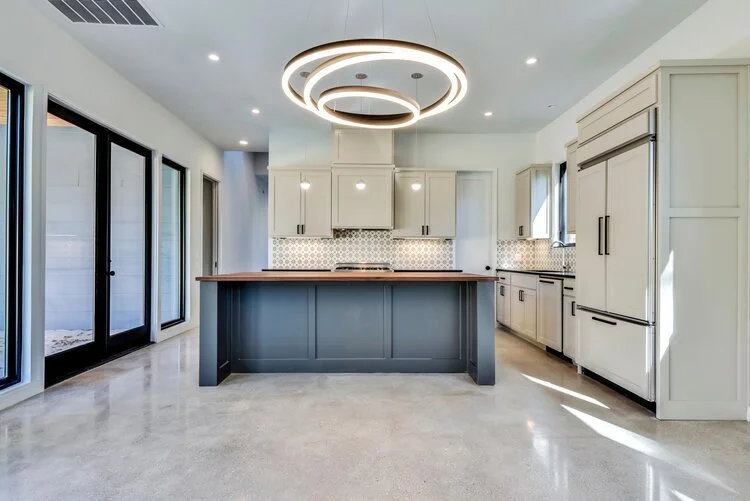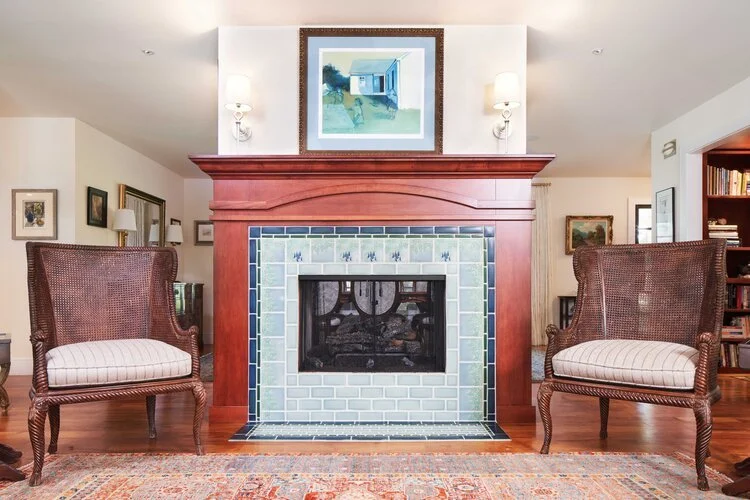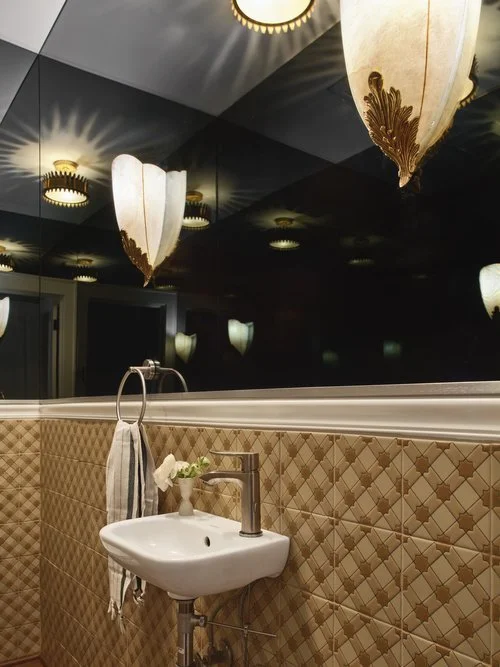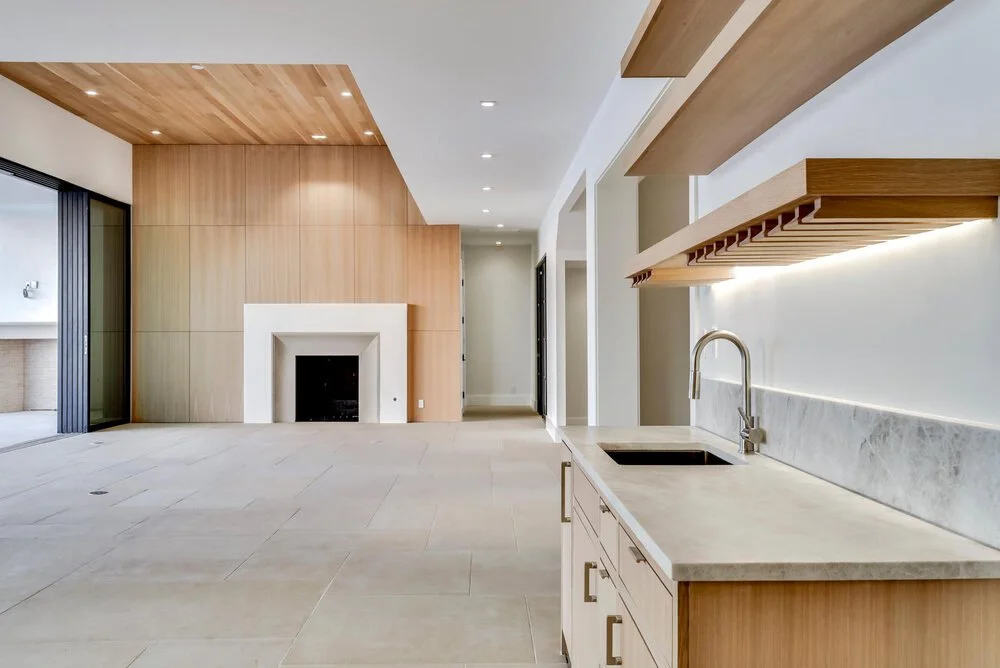Home Lighting Guide: Choosing the Right Color Temperature
Our Austin Architects Share Tips on Choosing the Right Color Temperature Bulbs for Your Home
Creating a lighting design plan doesn’t stop at mapping out placements and selecting fixtures. One of the most important components of light that will affect the functionality and mood of your home is color temperature. If you’ve stepped into a hardware store recently, you’ve noticed that there’s a wide range of LED bulbs and temperatures to choose from. To help you make the right decision for your space, our Austin architects have put together our Home Lighting Guide with everything you need to know on choosing the right color temperature bulbs.
What is Color Temperature?
Color temperature measures the hue of a light source, ranging from warm to cool. The correlated color temperature, or CCT, is a term that refers to how yellow or blue the light appears, and it is measured in units of Kelvin. The Kelvin color temperature scale runs from 1,000 to 10,000K, with residential and commercial light temperatures falling in the 2200 to 6500K range. The lower the Kelvin value, the warmer the light will appear, while the higher the Kelvin value, the cooler the light will look.
Light Temperature vs. Brightness
It’s important to note the difference between light temperature (measured in Kelvin) and brightness (measured in Lumens). While Kelvin indicates the color of light, Lumen measures the output. So, you can have a low and high Kelvin bulb emit the same amount of light if they have the same Lumen measure. However, the eye might perceive the low Kelvin bulb as less bright due to its softer hue, so higher Kelvin temperatures are often preferred for task lighting.
The Kelvin Color Temperature Scale
Residential lighting temperatures can be broken down into three main categories: warm, neutral, and cool.
Warm Light: 2200-2700K
The warm light range has a comforting glow that mimics the look of candlelight or incandescent bulbs. Homeowners often prefer this type of lighting for bedrooms because of its relaxing feel.
Neutral Light: 3000-3500K
The neutral light range produces a soft white light well suited for many residential spaces, from bedrooms to kitchens.
Cool Light: 4000-4500K
The cool light range delivers a cool, crisp white light that mimics daylight. It’s great for task lighting in kitchens, bathrooms, and workspaces. While residential spaces typically don’t use lighting above this range, commercial offices, factories, and warehouses might use lights ranging between 5000-6500K for specialty task lighting.
Choosing the Right Color Temperature by Space
It is important to consider the Kelvin value in creating the desired atmosphere in a room. For example, you might use a warmer light in a bedroom to produce a relaxing environment while employing a whiter light in a kitchen for crisp task lighting.
Living & Dining Rooms
The 2700 to 3000K range works well for living and dining spaces, creating a warm to soft glow that’s inviting and welcoming.
Kitchen
Because the kitchen is an active workspace, the best light temperature typically falls between 3000 to 4000K. If you have an open-concept kitchen, you must account for living area light temperatures to keep a consistent feel.
Bedrooms
It’s best to keep bedrooms free of daylight or blue light hues that can feel overstimulating as you prepare for rest. Warmer temperatures from 2200 to 2700K are perfect for this space.
Bathrooms
Bathroom vanities must be well-lit for makeup application and grooming. Many people like to mimic daylight in the bathroom, using color temperatures from 3000 to 4000K.
Garage & Workspaces
While most residential lighting falls between 2700 and 4000K, garages and workspaces can benefit from a higher light temperature for tasks at hand. Anything in the 4000 to 5000K should be sufficient.
Lighting Design Considerations to Keep in Mind
Light temperatures will affect the look and function of your home. The last thing you want is mismatched bulbs or inconsistent lighting that makes the room feel cold and unwelcoming. Here are a few considerations to keep in mind when planning your lighting design.
Consistent Light Temperatures
Keep light temperatures consistent. Light fixtures should have the same temperature bulbs throughout, and light sources in the room should feel cohesive in tone. A 4000K bulb will stand out like a sore thumb in a row of 2700K wall sconces.
Open Concept Spaces
Be conscious of lighting temperatures throughout open-concept spaces. Remember that 3000K temperature bulbs work well in most residential rooms and provide a good middle ground for consistent lighting.
Rooms With Tall Ceilings
If you have ceilings 10 feet or taller, it’s often best to use 3000K temperature bulbs. These help enhance the feeling of natural light in a soft, even tone.
Architectural Design Style
Consider your home’s architectural design style when selecting your lighting temperatures. For example, low Kelvin temperatures complement the warm wood tones throughout a Craftsman home. On the other hand, crisp light white at a higher Kelvin will best highlight the sleek finishes of a contemporary house.
Moody Accent Lighting
It’s also OK to break the rules sometimes when working to create an intentionally moody space. While 3000 to 4000K bulbs are typically recommended for bathrooms, an all-black powder bath would look great accented with low 2200K lighting to set the mood. Additionally, Smart LED lights offer the power to change light colors with the click of a button. So you could transform a well-lit living room into a cinema room with multicolored accents just in time for movie night.
Shining a Light on Color Temperature
Selecting the right color temperature lights for your home comes down to function, mood, and consistency. Take time to observe the light tones that resonate with you. Do you prefer a warm glow or a crisper daylight? If you need assistance with your home lighting design, our Austin architects would be more than happy to help.






